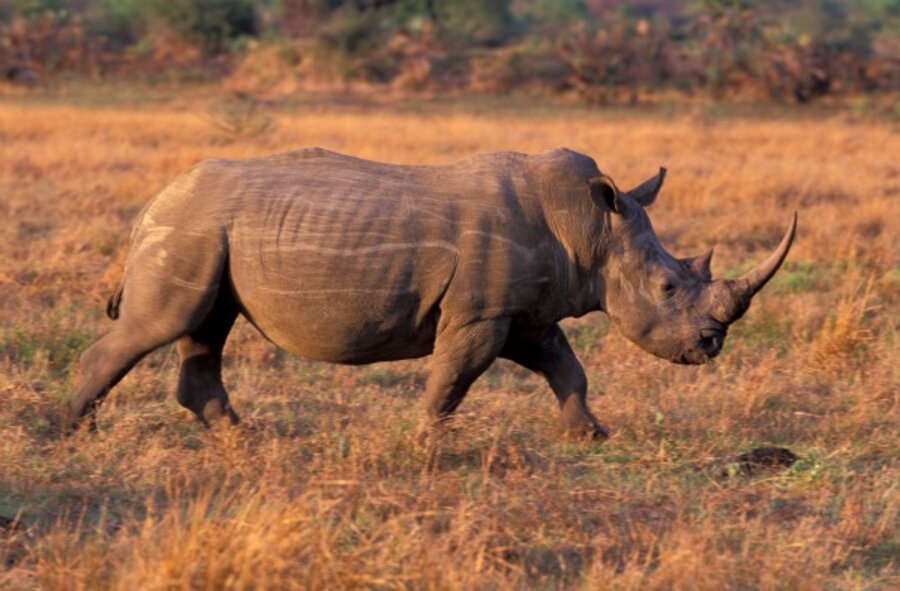Conservation helps endangered species
Loading...
Last spring, a fledgling robin hopped across our back deck, squeaking helplessly, its mother nowhere in sight.
Given that our yard is a thruway for neighborhood cats, my husband donned a pair of gloves, scooped up the spotted ball of feathers, and placed it as high as possible in a nearby shrub where we could keep an eye on it.
This was an attempt at species conservation on a small scale, for a critter that's hardly threatened (though cats allowed outdoors do kill endangered birds). Imagine such conservation on a global scale.
That's been happening over the last several decades, and the world now has something to show for it, such as the humpback whale, the white rhinoceros of southern Africa, the California condor. According to a new study, 64 species of mammals, birds, and amphibians have improved their endangered status as a result of conservation.
If conscious steps had not been taken to breed endangered species in captivity, to set aside protected areas for them, to ban their trade, or punish their poachers, biodiversity of vertebrates would have declined by nearly 20 percent. That's according to a study by the Switzerland-based International Union for Conservation of Nature, published in the journal Science.
The IUCN compiles the famed "red list" of threatened species. And while its report declares an "extinction crisis," declaring a fifth of the world's vertebrates threatened, the silver lining here is that the world knows what to do about it. For the first time, this report quantifies the global impact of conservation.
That's useful information right as the Convention on Biodiversity is meeting this month in Nagoya, Japan. More than 190 nations are signatories to the convention, which in 2002 called for a "significant reduction" of biodiversity loss by 2010. But the race to extract natural resources has far outpaced conservation. Now member nations must scale up their efforts and emerge from Nagoya with a strategic plan grounded in specific targets.
Millions of people, especially those who live in poor countries, depend on healthy, diverse nature, from forests to oceans. At stake is their livelihoods, and the interconnectedness of life on Earth – from Mongolia to your own back yard.





